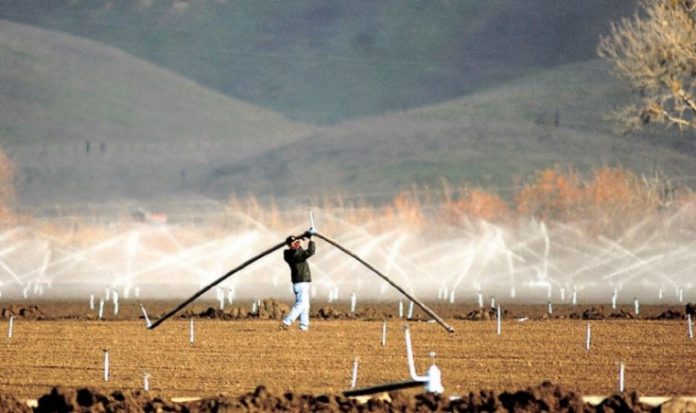California might be leaving one drought behind, but there’s another affecting San Benito County: labor shortage in agriculture.
San Benito County Farm Bureau Board Member Richard Bianchi said the region has experienced a labor shortage for the last five to eight years.
“The cause is most people don’t want to work in the fields,” Bianchi said. “It’s not the kind of work people want to do. The workforce emigrates from Mexico and part of the problem is we don’t have a guest worker program that is adaptable to every part of agriculture.”
Every commodity and area is different, Bianchi said.
“So when you try and drill things down to infinite detail, it doesn’t apply as easily,” he said. “Basically, what’s causing the shortage is the lack of a workable guest-worker program.”
Filice Farms experienced a labor shortage last year, owner Kay Filice said.
“I anticipate we’ll see it get increasingly worse because there are less people coming from Mexico to work,” Filice said. “That’s the bottom line: There are less people coming from Mexico.”
Uesugi Farms co-owner and General Manager Pete Aiello said his farm hasn’t felt a labor shortage yet, but expects to “feel the pinch” in the summer.
“Over the last few years, it’s gotten progressively worse,” Aiello said. “Where we feel it the most is in the field, particularly with the harvest. That’s where we need the most hands, and we’re covering several different areas all over the state. This area by far is the worst.”
Aiello said the issue starts with the country’s broken immigration system.
“It’s an extremely hot-button, emotional, political issue made more difficult than it really is,” he said. “It doesn’t matter what side of the aisle; it’s been terribly mismanaged by our government. As a result, we have a dwindling labor supply, but increased need for labor because our population is growing.”
California farmers are in charge of feeding the world, not just the state, he said.
“The population certainly isn’t getting smaller, but unfortunately the amount of farming operations are. For those of us in the game still, we have an increasingly larger burden to bear.”
Farms face competition from other industries like construction.
“As more construction work becomes available, we’re seeing less people interested in agriculture work,” Filice said. “Quite frankly, there aren’t a lot of people who want to work that hard. The people in the field work hard and have great skills. That’s what it takes to produce great fruit and vegetables.”
Some farms even face competition amongst themselves.
“Once we get started with the pepper harvest here, that’s where we feel it the worst,” Aiello said. “Several of our fellow farmers are starting their pepper harvest at the same time. We’re having to compete with each other for labor.”
Despite the competition, Aiello said we live in a capitalist society.
“We realize we need to compete. The best way to get good labor here is to pay them well, so we do. We’ve all been forced to offer better wages and retirement plans. We understand that we have to compete. It’s a free-market society. We have to provide compensation and we do. But that’s still not solving the problem for most of us.”
Workers in the region are well above minimum wage, Bianchi said. But that doesn’t seem to be enough.
“We haven’t dealt with minimum wage in several years,” Bianchi said. “Now you’re paying more for workers. I know certain crews, we have to pay them an extra amount to come to Hollister to work. And that’s directly because of the shortage and too much other work out there that’s close to home. You have to pay more.”
Filice said additional housing in San Benito County could make it more inviting for workers to come here.
“I think more housing in San Benito County would make it more inviting for some of the workers to come this direction,” she said. “Right now, they don’t want to drive from south county or Los Banos because of extra time and gas. We have insufficient affordable housing in San Benito County.”
Aiello said Uesugi Farms has to get smarter and more efficient by using technology and mechanization when possible.
“We’re a little more diligent with crop planting and scheduling,” he said, “trying not to have too many fields coming off at once.”
Mechanization and new technology use are the future, Filice said.
“I think our expectation is we have to be more open to mechanization and new technologies, and that’s the direction the farms are going. In the meantime, the people that are at the farms will be working longer hours. “With technology, food is going to be more expensive.”










